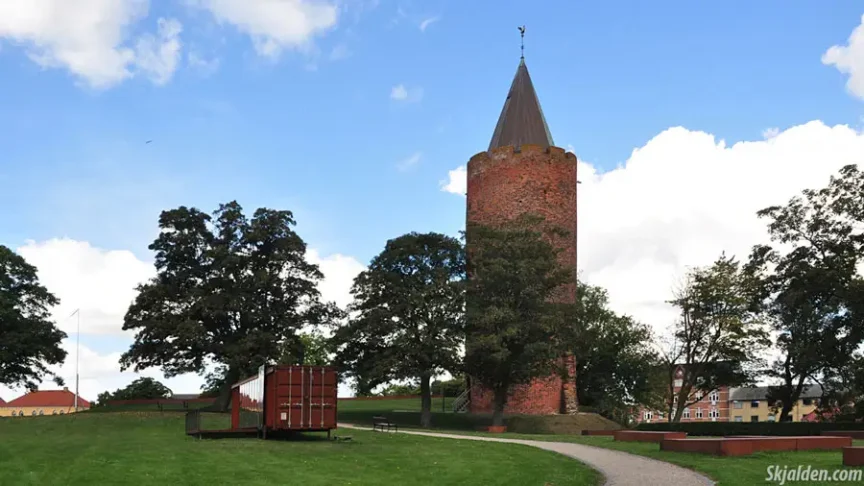In the town of Vordingborg, Denmark, lies Gåsetårnet, a significant piece of the country’s medieval history. It was originally part of the Vordingborg Castle, initiated by King Valdemar the Great around 1160. King Valdemar Atterdag later expanded the castle in the 1360s, creating Denmark’s largest castle complex of that era. Today, Gåsetårnet is the only remaining part of that complex.
This brick tower, about 26 meters high, was designed for defense. Its walls are very thick at the bottom and get thinner towards the top. The tower is topped with a 10-meter-high copper spire, added in 1871.
The tower’s name, ‘Gåsetårnet’, is derived from a golden goose figure on the spire. This feature symbolizes King Valdemar Atterdag’s defiance against the Hanseatic League, a powerful group of
Its Historical Role
Gåsetårnet has been under the care of various figures throughout history. On December 24, 1808, it became a part of King Frederik VI’s domain, marking it as the first officially protected historical monument in Denmark.
Now, it stands as the only part of the old Vordingborg Castle that is not in ruins, recognized as the best-preserved medieval tower in Denmark.
For Vordingborg, Gåsetårnet is more than just a structure; it’s a key part of the town’s identity. It’s notable for its impressive size and the iconic gold goose on top. From the tower, visitors can enjoy views of the town and landmarks like the Storstrøm and Farø Bridges.
Gåsetårnet holds a special place as the best-preserved medieval tower in the Nordic region. It serves as an example of medieval construction, with some parts dating back to the 1200s.
Gåsetårnet Today
Gåsetårnet is a popular spot for those interested in history and architecture. Located a short drive from Feddet Strand Resort, it connects visitors to an important period in Danish and European history. As the sole survivor of the once-grand Vordingborg Castle, it invites people to learn about and reflect on the past.
Gåsetårnet is more than a historical building; it’s a link to a bygone era, offering a chance to understand the lives and times of medieval Europe.
Photo credit: Helen Simonsson
